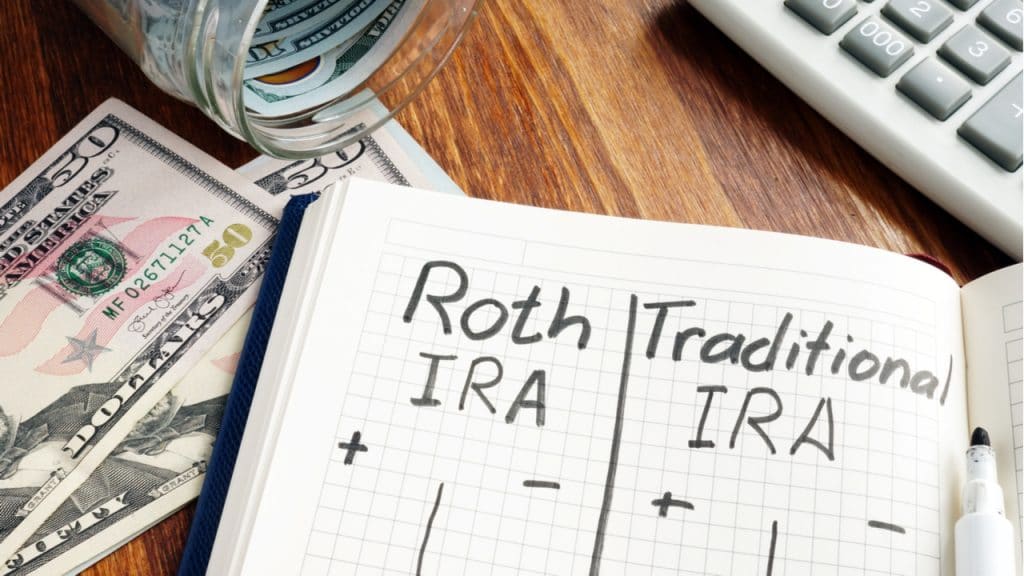Roth vs. Traditional IRA – What’s the Difference?

One of the most common questions I am asked when discussing retirement planning is, “What is the difference between a Roth and a Traditional IRA?”
Both Individual Retirement Account (IRA) options are great ways to save for retirement. You can contribute to one or both types in any given year. However, there is a maximum contribution limit to these IRAs ($6,000 if you are under age 50 and $7,000 if you are 50 or older in 2021).
This means you can contribute up to $6,000 (or $7,000 if you are 50 or older) total to Roth and Traditional IRAs in your name in a given year. You cannot contribute $5,000 to a Roth and then another $5,000 to a Traditional IRA.
Now that you understand a bit of what an IRA is, let’s discuss each type in more detail:
Roth IRA
A Roth IRA holds after-tax dollars. When you contribute to this type of IRA, you do not get a tax deduction for your contributed year. Although you do not get an immediate tax break, the entire account value is tax-free when you take the funds out in retirement. All of the gains you have earned over time are dispersed without you ever paying federal or state income tax on them.
Traditional IRA
Typically, a Traditional IRA holds before-tax dollars. When you contribute to this type of IRA, you get to take a tax deduction for your contributed year. Although you get an immediate tax break for that year, the entire account value is taxable when you take the funds out in retirement. While you could save on taxes when you contributed the funds, you have only deferred paying taxes later.
Both types of IRAs have contribution limits based on your Federal tax filing status and income earned for that year.
Now, there are benefits to both types of IRA accounts, depending on your situation.
For instance, it may be beneficial to take a tax break today and defer the tax payment to retirement when you plan to be in a lower tax bracket. Or it may be helpful to pay the income tax now and allow your earnings to grow and be dispersed tax-free in retirement.
Decide What IRA Option Works Best For You
In order to decide what might work best for your situation, I suggest meeting with a Financial Advisor like myself. These decisions are not set in stone, and we can determine what type of account to contribute to on a yearly basis as your retirement savings needs change. If you have questions or would like to discuss your unique situation, please don’t hesitate to contact me. Click here so you don’t miss a blog post!
Nichole M. Coyle
CERTIFIED FINANCIAL PLANNER™
20333 Emerald Pkwy
Cleveland, OH 44135
216.621.4644 x1607
Securities and advisory services offered through Cetera Advisor Networks LLC, member FINRA/SIPC, a Broker-Dealer, and a Registered Investment Advisor.
Cetera is not affiliated with the financial institution where investment services are offered or any other named entity.
Investments are: Not FDIC/NCUSIF insured * May lose value * Not financial institution guaranteed * Not a deposit * Not insured by a federal government agency.
Posted In: FFCCU News and Info, Tips For Managing Finances




